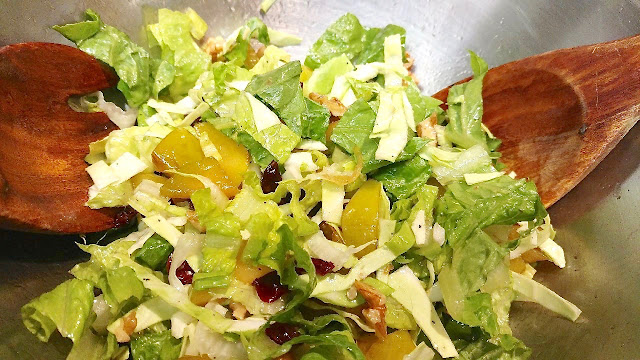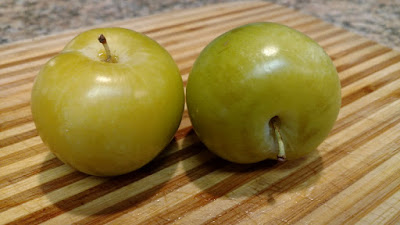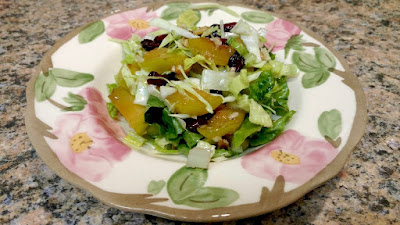
Recipe: Dish combines fresh fruit with dried cranberries, walnuts

of apricots and plums. (Photos: Debbie Arrington) |
Pluots can puzzle people. Sure, they're sweet-tart and crunchy, wonderful eaten fresh out of hand.
But what can you do with them?
Thanks to hybridizer Dave Wilson Nursery, dozens of pluots and close cousins apriums and plumcots are now available. Known as interspecific plums, these mixed varieties include plums and apricots in their parentage. But how that cross turns out can be amazingly different. That gives each variety unique characteristics.
Pluots range in skin color from pale yellow-green to darkest plum purple, often with contrasting flesh. The inherent blend of apricot and plum makes a wonderful jam as well as tarts and dessert fillings.
That sweet-tart-crunchy combo also is perfect for a fresh summer salad. The variety used for this recipe was Emerald Drop, which has very pretty yellow-green skin with tangy apricot-like flesh. But any pluot or aprium or plumcot would be tasty, too.

or aprium will do. |
Pluot salad
Makes 3 servings
Ingredients:

|
Comments
0 comments have been posted.Sacramento Digs Gardening to your inbox.
Sites We Like
Garden Checklist for week of April 21
This week there’s plenty to keep gardeners busy. With no rain in the immediate forecast, remember to irrigate any new transplants.
* Weed, weed, weed! Get them before they flower and go to seed.
* April is the last chance to plant citrus trees such as dwarf orange, lemon and kumquat. These trees also look good in landscaping and provide fresh fruit in winter.
* Smell orange blossoms? Feed citrus trees with a low dose of balanced fertilizer (such as 10-10-10) during bloom to help set fruit. Keep an eye out for ants.
* Apply slow-release fertilizer to the lawn.
* Thoroughly clean debris from the bottom of outdoor ponds or fountains.
* Spring brings a flush of rapid growth, and that means your garden is really hungry. Feed shrubs and trees with a slow-release fertilizer. Or mulch with a 1-inch layer of compost.
* Azaleas and camellias looking a little yellow? If leaves are turning yellow between the veins, give them a boost with chelated iron.
* Trim dead flowers but not leaves from spring-flowering bulbs such as daffodils and tulips. Those leaves gather energy to create next year's flowers. Also, give the bulbs a fertilizer boost after bloom.
* Pinch chrysanthemums back to 12 inches for fall flowers. Cut old stems to the ground.
* Mulch around plants to conserve moisture and control weeds.
* From seed, plant beans, beets, cantaloupes, carrots, corn, cucumbers, melons, radishes and squash.
* Plant onion sets.
* In the flower garden, plant seeds for asters, cosmos, celosia, marigolds, salvia, sunflowers and zinnias.
* Transplant petunias, zinnias, geraniums and other summer bloomers.
* Plant perennials and dahlia tubers for summer bloom.
* Mid to late April is about the last chance to plant summer bulbs, such as gladiolus and tuberous begonias.
* Transplant lettuce seedlings. Choose varieties that mature quickly such as loose leaf.